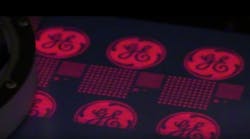LCD backlights and lighting drive largest growth yet seen in HB-LED market
ROBERT STEELE
Coming out of a year of relatively low growth for the HB-LED market (up 5% to $5.3 billion in 2009), largely due to the worldwide economic recession, the industry is now faced with an abundance of riches. It will come as no surprise to the readers of LEDs Magazine that unprecedented growth opportunities for HB LEDs will be provided over the next five years by lighting applications and backlights for LCD displays (including notebook computers, TVs and monitors).
In 2009, these applications helped to raise the overall HB-LED market from what would otherwise have been a dismal (i.e. negative growth) year, with a combined contribution to the market total of 29%. In 2010 and beyond, these two applications will be the dominant market growth drivers.
Lighting
The market momentum for LED lighting applications slowed somewhat in 2009 (as the overall lighting market declined by 15-20%), but it is resuming with a vengeance in 2010. Although LED lighting still accounts for less than 2 % of the overall lighting market, and still mainly addresses niche applications, growth continues to be robust, at an estimated 31% for 2010.
Many “mainstream” lighting projects are beginning to be addressed by LED lighting. Some of these include major retrofits at retail chains (e.g. Wal-Mart, Starbucks), hotels and casinos, parking garages, and municipal lighting. Energy efficiency is often the major driver, but other attributes of LED lighting such as long life (lower maintenance costs) and improved quality of light are often important factors.
Newly introduced LED replacement lamps and luminaires are showing much better performance than those of earlier generations. They appear to be using better and more efficient LEDs, although this generally means higher prices for lighting products. There is still an issue with low-price, low quality products in the market, but resellers seem to be getting more sophisticated about their offerings, often because of customer complaints and returns.
Backlighting
The use of LEDs for backlighting larger LCD displays (as opposed to small displays for mobile phones, digital cameras, etc.) began in earnest in 2006, when the first notebook PCs adopted them. Although the penetration was initially small (still only about 3% in 2007), it then increased rapidly, exceeding 50% in 2009, and it is projected to exceed 80% in 2010.
Although the first LED-backlit LCD TVs were introduced by Sony in 2005, the market did not begin in earnest until 2008, when Samsung introduced its first mass-market LCD backlit models, then began to seriously ramp up in 2009. Significant volumes were shipped by Samsung, as well as LG and a few other LCD TV makers, amounting to a market penetration of 2.3%. We expect penetration of nearly 15% for 2010, with rapid increases in penetration in the following years.
Although some high-end LCD monitors have been shipped with RGB backlights since 2005, the move to the use of white LEDs for backlighting mainstream desktop monitors began only in late 2008. In early 2009, all major monitor manufacturers announced that all of their new models would use LED backlights, which will result in yet another high volume market for over the next five years.
Overall market growth
The developments discussed above have set the stage for a dramatic ramp-up in the market for HB-LEDs. We are forecasting a market growth of 52% in 2010 to $8.2 billion. Our longer term forecast projects a market growth averaging 30.6% per year, reaching $20.5 billion in 2014. In that year, we project that 56% of the market will be accounted for by backlights for medium-to-large LCD displays (10 inches and above), and 21% will be accounted for by lighting applications.
As might be expected, this rapid market growth will be felt in the unit demand as well as sales revenues. We are forecasting LED unit growth of 44% to 78 billion packaged devices in 2010. Our forecast for 2014 indicates that the unit volume demand will be four times higher than in 2009, exceeding 200 billion units. The demand for GaN-based LEDs will be especially robust, as these are the key components for backlights and lighting. Demand for GaN chips (before packaging) is forecast to grow at more than a factor of five from 2009 to 2014.
Manufacturing capacity
Clearly this will have profound implications for the need for production capacity. Although growth rates of this magnitude have been seen before in the LED industry, the absolute magnitudes were much smaller. For example, from 2000 through 2005, overall unit demand grew by a factor of 4.7. However, the demand in 2005 of 24 billion units was nearly an order of magnitude smaller than that projected for 2014. Thus, the scale of the industry required to serve the forecasted demand will be correspondingly higher.
The most critical manufacturing tool for LED production is the MOCVD reactor. The two main suppliers, Veeco and Aixtron, report unprecedented demand for their reactors, with both companies currently producing at full capacity, and with plans to increase their capacity throughout the year. Fortunately for the LED industry, the production capacity of MOCVD reactors has increased along with the growth in unit demand. In the early 2000’s, typical reactors could process 6 x 2-inch substrates. This later increased to 11 x 2-inch, and then to 21- or 24 x 2-inch. Today’s high capacity MOCVD reactors can process 42- or 45 x 2-inch substrates simultaneously, or roughly seven times the capacity of the early 2000’s generation. In light of this trend, the number of reactors that will need to be installed appears to be more tractable than one might initially imagine.
To meet the projected demand for GaN chips, Strategies Unlimited has calculated, based on our internal model, that 200 additional reactors will be needed this year and another 280 in 2011. This seems well within the capacity of the MOCVD manufacturers.
Shortages and over-capacity
There has been much discussion of possible capacity shortages in the near term and overcapacity in the longer term. Both are possible, but it must be remembered that in this rapidly growing market, timing is everything.
Currently reactor order lead times are about six months, and it takes another 3-5 months to get a reactor installed, running and qualified. Many LED suppliers have had reactors on order since late last year, and are just now getting them running and qualified, while others still have reactors on order. The rate at which these reactors can be installed and qualified, relative to the ramp-up in demand, will determine whether there are capacity shortages or overcapacity, and the situation is likely to be highly specific to individual regions, companies, and product types.
However, the main factor in these considerations is the tendency of LED suppliers to want to capture as large a market share as possible. A situation could develop similar to that in the 2002-2004 timeframe, during the rapid growth of the mobile-phone market. Excess capacity came on line in the latter part of that period, and prices were driven down, at least for the low-performance LEDs such as keypad backlights. If history repeats itself, then overcapacity within the next one-to-two years seems possible. However, as noted above, this may not be the case for all LED types in all regions, especially for the high-performance white LEDs used in lighting applications.






